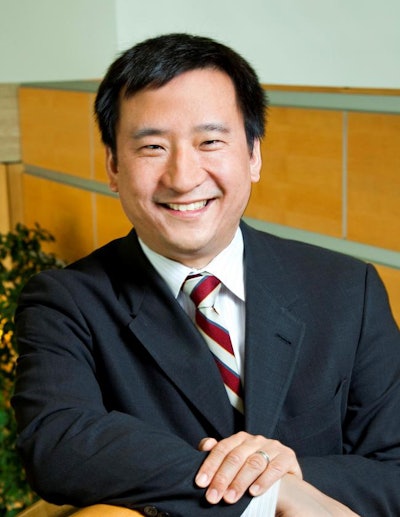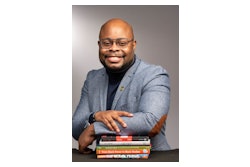Among the concepts the law has distorted is “color blindness.” When Martin Luther King, Jr., delivered his “I Have a Dream” speech at the National Mall in Washington, D.C. in 1963, before the Civil Rights Act was enacted, he popularized a phrase that has been invoked by those who have not shared his idealism. His moral precept for society and self, to judge based on the content of character rather than the color of skin, is not at all what others have promoted with the same language.
The original “color blindness” served White supremacy. That is not an interpretation based on contemporary norms. It is the explicit explanation of the so-called “great dissenter,” Justice John Marshall Harlan, who cast the lone vote against the Supreme Court decision in Plessy v. Ferguson. To quote the passages he penned is to show how rhetoric about race is not what it seems, and it is easy enough for those who are opposed to equality to appear as if they favor it.
The 1896 dispute concerned the Fourteenth Amendment to the Constitution. The provision contains a clause guaranteeing “equal protection of the laws.” Homer Plessy challenged “separate but equal,” a doctrine that enforced the former but failed to offer the latter, specifically on railroad trains where he, one-eighth black, was relegated to the inferior seating, stigmatized for his identity. The regulation was “de jure” racial segregation, meaning by law, not merely “de facto,“ meaning in fact (due to custom). The other Justices upheld Jim Crow. The color line would not be eliminated for more than a half century, not until the profound precedent of Brown v. Board of Education.
Although Harlan had served in the Union Army, he opposed the Emancipation Proclamation and the Thirteenth Amendment ending slavery. Here he is in his own words. They are clear.
“Our Constitution is color-blind, and neither knows nor tolerates classes among citizens,” Harlan stated. “In respect of civil rights, all citizens are equal before the law,” he added. The three sentences preceding these much praised pronouncements, however, set the context: “The white race deems itself to be the dominant race in this country. And so it is in prestige, in achievements, in education, in wealth and in power. So, I doubt not, it will continue to be for all time if it remains true to its great heritage and holds fast to the principles of constitutional liberty. But in view of the Constitution, in the eye of the law, there is in this country no superior, dominant, ruling class of citizens.”
 Frank Wu
Frank WuHarlan’s version of color blindness is not King’s aspiration. Harlan was abstract, formal, technical, concerned with how the government classifies people and nothing more. He believed whites were better than blacks, openly and without shame. He would prohibit the spectacle of “separate but equal” in the law, because — as he himself emphasized — the alternative of color-blindness would ensure whites remained superior. Although he was reconciled to the two races living together, he was not prepared to grant what the white race had in “prestige, achievements, education, wealth, and power” to the black race or to others either.
Harlan himself perceived color as he pleased. His other objection about “separate but equal” was that it did not segregate consistently. He hated the Chinese, who had become numerous enough in California to be discussed as “the Chinese problem,” as elsewhere African Americans were talked about as “the Negro problem.” Harlan would have denied even a Chinese person born on American soil the rights of citizenship. He said so in another dissent, in the Wong Kim Ark case, from the same time period. The majority there ruled in favor of a non-racial interpretation of another clause of the same Fourteenth Amendment, extending as the text indicated, to all persons.
Here Harlan is again in his own words. This passage often is excised from the textbook excerpts, but it is integral to his opinion and can be readily found in the unedited official reports. Law professor Gabriel Chin deserves credit for pointing out the omission, but despite his scholarship this aspect of the case is still glossed over.
Harlan wrote: “There is a race so different from our own that we do not permit those belonging to it to become citizens of the United States. Persons belonging to it are, with few exceptions, absolutely excluded from our country. I allude to the Chinese race. But, by the statute in question, a Chinaman can ride in the same passenger coach with white citizens of the United States…”
Any reader of Dr. King’s writings or listener to his sermons, however casual, would discern that he was aware of race, racial discrimination, and racial disparities, as in the “Dream” speech referencing repeatedly the condition of African Americans. He was sensitive to class as well, but he appreciated how race and class were related and fighting the one was not at odds with addressing the other. Dr. King’s rhetoric continues to have its power. That is why others wish to appropriate it.
Color blindness is invoked casually, without thought to its implications. We need to remind ourselves of it origins. Harlan’s vision of the color-blind Constitution should be revealed for what it was — and remains.
Frank H. Wu is the William L. Prosser Distinguished Professor at the University of California Hastings College of the Law.


















